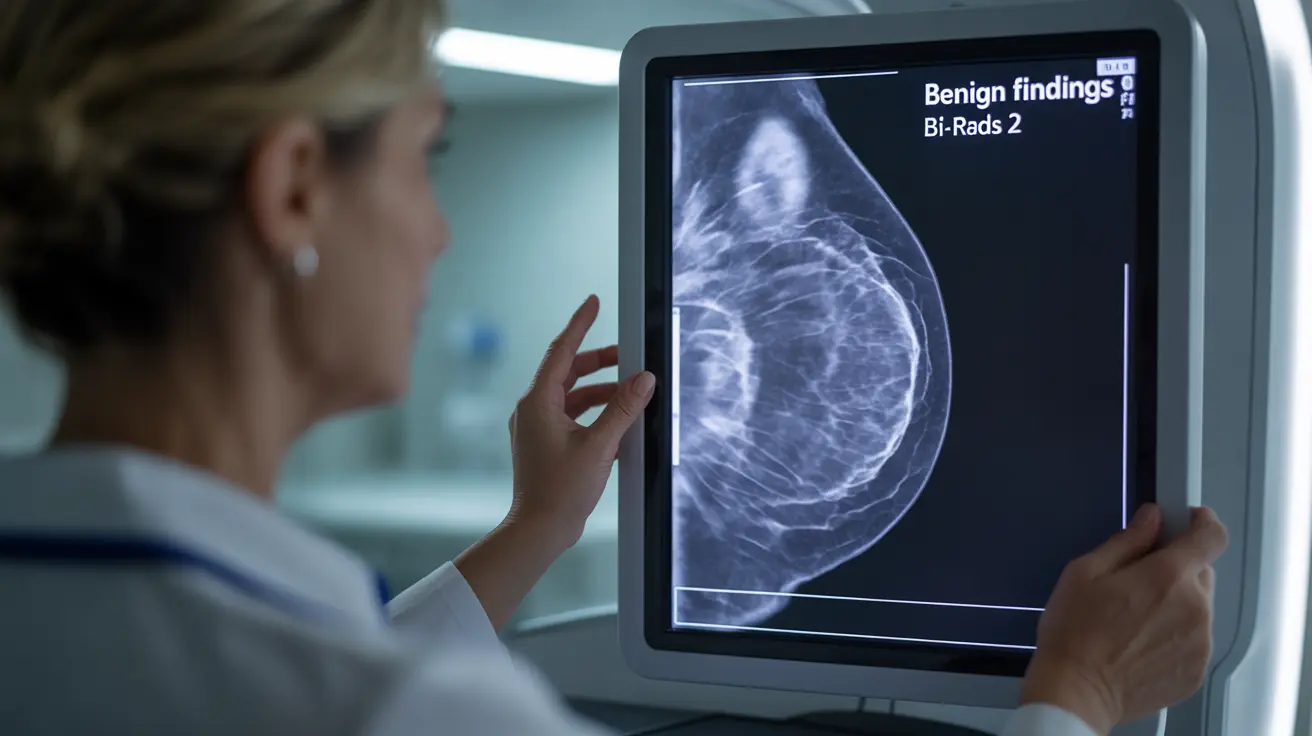Receiving your mammogram results can bring a mix of emotions, especially when you see terms like "BI-RADS 2" on your report. Understanding what this score means is crucial for your peace of mind and continued breast health monitoring.
BI-RADS (Breast Imaging Reporting and Data System) is a standardized way for radiologists to describe mammogram findings. A BI-RADS 2 score is actually good news, indicating benign (non-cancerous) findings that shouldn't cause concern.
What Is a BI-RADS 2 Classification?
A BI-RADS 2 classification represents a definitive benign finding on your mammogram. This means the radiologist has identified something in your breast tissue that is completely normal or has known benign characteristics. These findings are considered non-cancerous and require no additional testing or special follow-up.
Common Benign Findings in BI-RADS 2 Results
Calcifications
Many BI-RADS 2 findings include benign calcifications, which are small deposits of calcium that can appear as white spots on mammograms. Common types include:
- Skin calcifications
- Vascular calcifications
- Popcorn-like calcifications (typically in fibroadenomas)
- Round or punctate calcifications
Other Benign Findings
Additional benign findings that may result in a BI-RADS 2 classification include:
- Oil cysts
- Simple cysts
- Intramammary lymph nodes
- Breast implants
- Post-surgical changes
- Fibroadenomas with typical appearance
Follow-up Recommendations
With a BI-RADS 2 result, you can continue your routine screening schedule. For most women, this means:
- Annual mammograms for women 40 and older
- Continued breast self-awareness
- Regular clinical breast exams during annual check-ups
Frequently Asked Questions
What does a BI-RADS 2 score mean on my mammogram report?
A BI-RADS 2 score indicates that your mammogram shows benign (non-cancerous) findings. The radiologist has identified normal variations or common benign conditions that require no additional testing or concern.
Are BI-RADS 2 findings considered cancerous or harmful?
No, BI-RADS 2 findings are definitively benign and not considered cancerous or harmful. These findings represent normal variations or known benign conditions that pose no risk to your health.
What kind of benign breast changes are included in a BI-RADS 2 result?
BI-RADS 2 results commonly include findings such as benign calcifications, oil cysts, fibroadenomas, intramammary lymph nodes, and normal post-surgical changes. These are all well-documented benign conditions.
Do I need further tests or treatment if my mammogram shows a BI-RADS 2 finding?
No additional tests or treatments are needed for a BI-RADS 2 finding. These results are considered definitively benign, and you can continue with routine screening mammograms as recommended by your healthcare provider.
How often should I have mammograms after receiving a BI-RADS 2 result?
After a BI-RADS 2 result, you should continue with routine screening mammograms according to standard guidelines. For most women, this means annual mammograms starting at age 40, unless your healthcare provider recommends a different schedule based on your personal risk factors.
Remember, while a BI-RADS 2 result is reassuring, it's important to maintain regular breast cancer screening as recommended by your healthcare provider and to report any noticeable breast changes between screenings.




